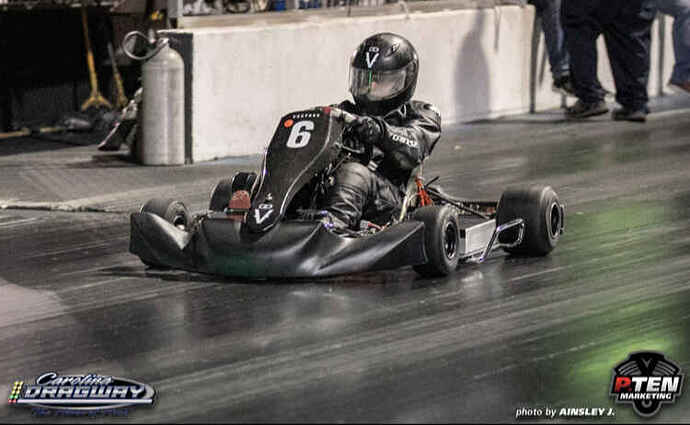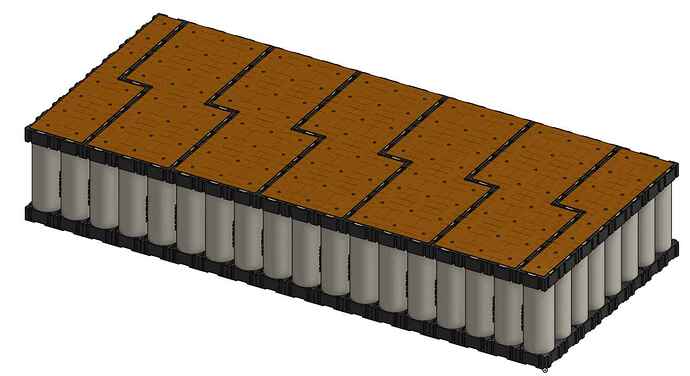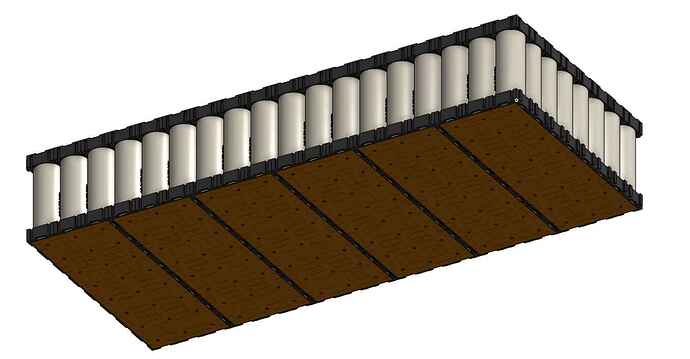Project aiming at building a reasonably priced electric power system for an electric racing kart.
Hi Guys!
A lot of good and bad projects start this way… It is hard to say how this one will end up… I got a lot of inspiring reads on this forum, I am stoked to start sharing back here.
I have read and researched about electric propulsion systems for racing karts for a few months now. I have worked extensively in motion controls in the past, from building electric RC planes when I was 10 years old to building complex automated machines now.
I am really pumped to start working on this project. I am a power electronics engineer (or was I guess)… Now doing less design and hands work as I used to do. I am due to go back in the trenches to get my hands dirty, something I always loved to do. I love karting too… so it’s a lot of my favorite topics in one ![]()
My goal is fairly simple: Make an open source design for a great electric propulsion system for racing karts. The north start is to make the cost of ownership (COO) lower than a Rotax Max 125cc kart, with comparable performance. Say you race 4 times in a summer and lap at least one solid session every other week… Here in Montreal the season start early April and ends earlier October, so that would be roughly 28 weeks of racing (14 good lapping days + 4 race week ends). Ideally COO would break even during year 1, but I think this is going to be too much of a stretch goal. I think two seasons is more realistic.
Some rules I want to set for myself:
- No modification to the target chassis. The system should be swappable from one chassis to another seamlessly. I am on a shifter base now, so the goal would be to swap between any recent shifter chassis.
- Max 5 minutes battery swap
- Charge time should be 1 hour on a 240V @ 30A setup
- Battery should be fully managed by a BMS at all times (charging and racing)
- The design should be completely battery agnostic as long as voltage and current ratings are respected.
- All components should be easy to source. Nothing overly fancy.
- The complete design should be open source and available for anyone to use and build their replica.
My base will be a 2019 Birel shifter (CRY30-S9). It’s clear that I will need to mount the motor with seat facing output due to the location of the sprocket. I noticed that Gary @Vextrek also did mount his monster AC-9 inductive monster that way too ![]() The BSR setup has a far left mounted shaft sprocket (euro style) and is mounted the other way…
The BSR setup has a far left mounted shaft sprocket (euro style) and is mounted the other way…
I am still looking to figure out what the best motor & controller setup is. So far I have been seeing lots of adoption of Sevcon and am currently leaning towards a Motenergy ME1507. Curious to hear your thoughts and feedback on this seemingly “standard” setup. I would run this on a 100V pack.
- Motenergy Me1507
- Sevcon Gen4 Size6
Tagging some of the folks I have been following.
@KMECHAD
@hallkbrdz
@Vextrek
FG.
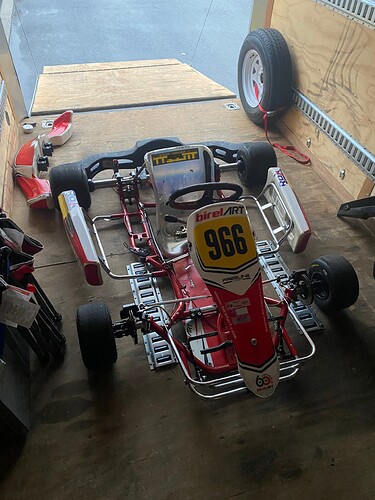
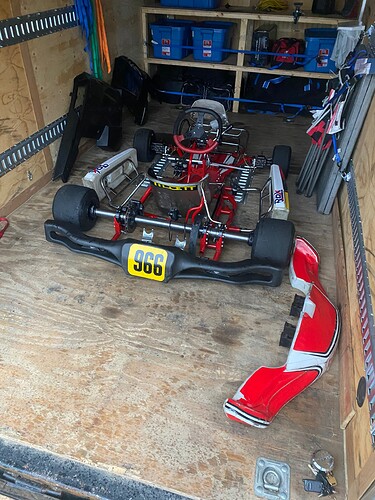
This should be interesting. Once all you electric kart fabricators are done and have designed your karts, there should be a race-off. It would actually be pretty cool if there was an “open” electric category. I guess it will ultimately be about compromises, some karts might have more range/less speed I suppose.
![]()
That would be quite cool actually. I am not saying no to this one but gotta get the thing sorted out first!
I’ve got a little experience in this realm as well if you want to chat.
Thanks Matt! I read your thread, super neat stuff!!
This is awesome. The more people who get involved in projects like this the better. Definitely want to watch the progress on this. Really want you to succeed and let us know if we can help in anyway.
Vextrek woukd be happy to build a lithium ion pack for you. Currently running a 100 V set up on our prototype. Just let us know if we can help. really like the Birel Chassis by the way. Best of luck and keep us posted.
Hi Gary,
I am all in… I looked at your P26A pack, these cells are very good. Now with the P42A, it could be even better @ 45A pulse discharge. I saw you have a Omega PA250i welding system… I was planning on maybe purchasing one but perhaps we can work together… I am waiting for the quote and I am expecting it to hurt…
Let me send you an email offline to discuss how we could work this out. Right now it looks like a dual pack, 12s12p, on on each side of the chassis based on the Molicel P42A could be pretty good…
Thanks for posting, I am new to the forum, it’s fun to have new friends that work on cool projects ![]()
FG.
yes sir. Looking forward to speaking with you. Just send email to [email protected]. Thanks.
Alright,
Some basic mechanical CAD of the pack. It is a 12s12p. I plan on using two of these, in a configuration similar to @Vextrek, one on each side of the kart. That will give me a 24s12p, ~50.4Ah, 100.8V, 540A peak.
Just curious. How much does one pack weigh?
Salut @Bimodal_Rocket !
These Molicel P42A weight 67.8g each. I will have 144 on each side of the kart → 144*0.0678kg = 9.9kg → 21.5 lbs. Since I will have two packs → 43 pounds total. That is not counting BMS + enclosures etc. I am quite confident I can get creative there and make sure to keep this packaging portion rather light…
It is on the heavy side. As a development platform that will give me more to test and I can eventually reduce the weight if I need to.
FG.
40lbs isn’t too bad. I wonder how that compares to electric rental kart packs.
I am not sure how it compares but these cells are quite amazing. I doubt they use that level of quality in a rental kart… I would assume that performance is second to charge cycles and cost for them…
Hi guys,
I have been researching which BMS would be a good fit for my pack. With 100V and about 450A peak, it’s pretty difficult to find something that is reasonably priced, that is well documented and has good build quality.
I for sure need a system that is based on a standalone external contactor. Going full integrated seems risky since most integrated BMSs that support these levels are quite unclear about how much peak, and for how long is acceptable. It’s easy math once tou have the device and check the FETs + back calculate how much thermal stress + peak current they can take… but that’s after the spend…
On top of my list are Orion BMS, and this open source design that seems quite good called ENNOID.
Any thoughts on good options for external contactor based BMSs?
FG.
Just wanna chime in here, something to consider when you’re setting up the electrical system architecture.
Rentals (in particular referencing Sodi) are set up with a battery pack on each side of the kart. One is designated primary with the other one secondary.
The architecture is set up such that the main power draw is from the primary battery with the secondary battery keeping the primary full, basically.
Setting it up that way eeks out maximum service life from the battery packs - you have to swap them over every month and in doing so essentially minimises any charge memory losses and you get maximum useful life from the batteries.
You’ll need a BMS that is not in-line with the current flow for that amperage. By not-in-line I refer to the operating current flow being controlled by one or more contactors. The Orion BMS is a good solid choice for an all-in-one unit that does this. The ENNOID appears to be an in-line unit and lists a limit of 60A continuous (no peak given), so I don’t see how that would work.
Hi Bryan,
Agreed, an external contactor is necessary in my case.
Here is the original ENNOID project that utilizes this type or architecture. Note that the contactor is mounted right on the master PCB.
FG.
Oh I see. Interesting design, but it might be a challenge to mount and keep kart vibrations from cracking the PCB.
ZEVA and Dilithium are other options.
